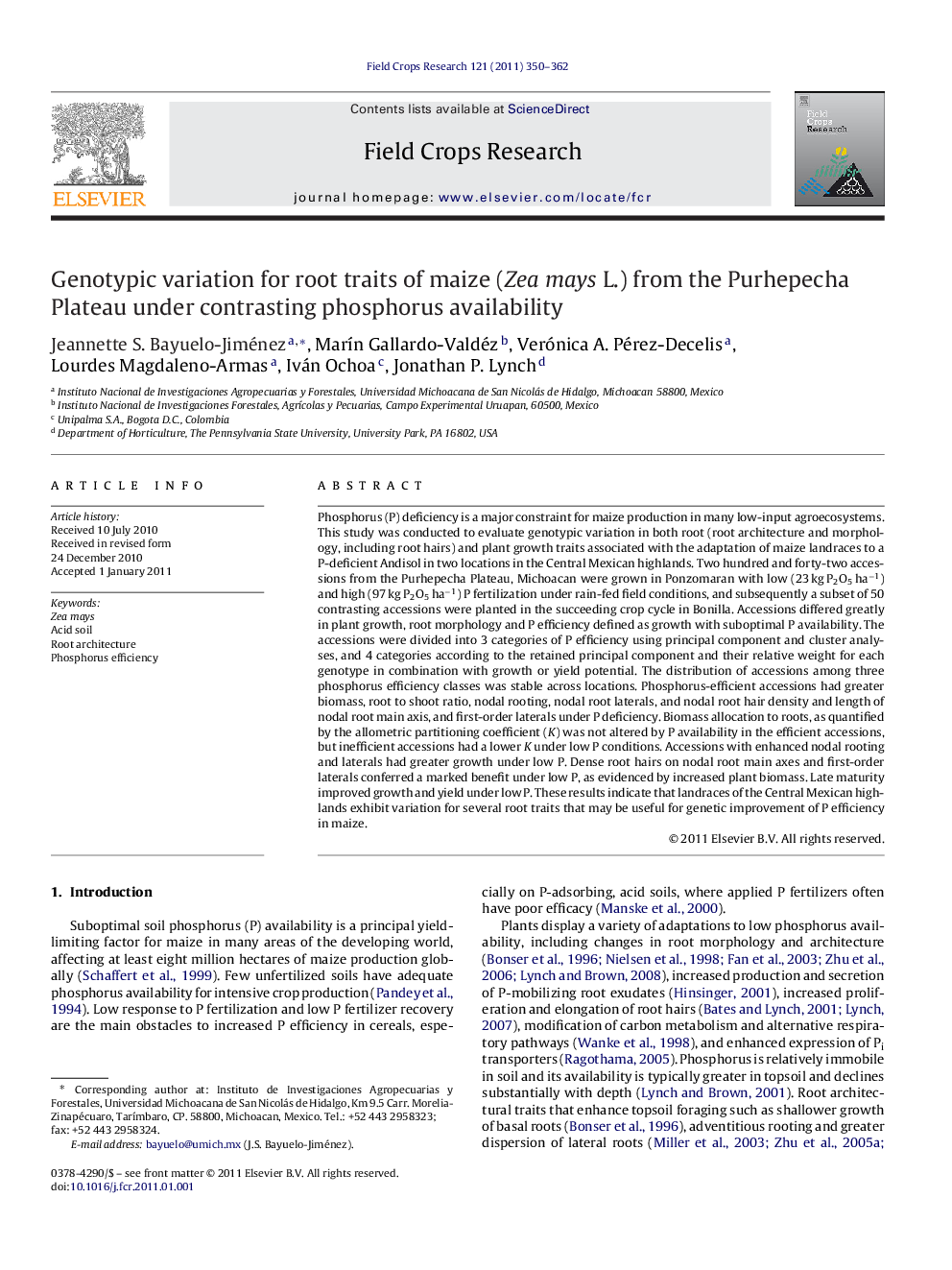| کد مقاله | کد نشریه | سال انتشار | مقاله انگلیسی | نسخه تمام متن |
|---|---|---|---|---|
| 4510813 | 1321876 | 2011 | 13 صفحه PDF | دانلود رایگان |

Phosphorus (P) deficiency is a major constraint for maize production in many low-input agroecosystems. This study was conducted to evaluate genotypic variation in both root (root architecture and morphology, including root hairs) and plant growth traits associated with the adaptation of maize landraces to a P-deficient Andisol in two locations in the Central Mexican highlands. Two hundred and forty-two accessions from the Purhepecha Plateau, Michoacan were grown in Ponzomaran with low (23 kg P2O5 ha−1) and high (97 kg P2O5 ha−1) P fertilization under rain-fed field conditions, and subsequently a subset of 50 contrasting accessions were planted in the succeeding crop cycle in Bonilla. Accessions differed greatly in plant growth, root morphology and P efficiency defined as growth with suboptimal P availability. The accessions were divided into 3 categories of P efficiency using principal component and cluster analyses, and 4 categories according to the retained principal component and their relative weight for each genotype in combination with growth or yield potential. The distribution of accessions among three phosphorus efficiency classes was stable across locations. Phosphorus-efficient accessions had greater biomass, root to shoot ratio, nodal rooting, nodal root laterals, and nodal root hair density and length of nodal root main axis, and first-order laterals under P deficiency. Biomass allocation to roots, as quantified by the allometric partitioning coefficient (K) was not altered by P availability in the efficient accessions, but inefficient accessions had a lower K under low P conditions. Accessions with enhanced nodal rooting and laterals had greater growth under low P. Dense root hairs on nodal root main axes and first-order laterals conferred a marked benefit under low P, as evidenced by increased plant biomass. Late maturity improved growth and yield under low P. These results indicate that landraces of the Central Mexican highlands exhibit variation for several root traits that may be useful for genetic improvement of P efficiency in maize.
Research highlights
► We evaluated maize landraces from highland Mexico for adaptation to low P soil.
► Accessions with enhanced nodal rooting and laterals had greater growth in low P.
► Dense root hairs on nodal first-order laterals under low P increased plant biomass.
► Late maturity improved growth and yield under low P.
► These landraces may be useful to improve P efficiency in maize.
Journal: Field Crops Research - Volume 121, Issue 3, 3 April 2011, Pages 350–362